Our September 2021 voyage on the Danube was the first foreign traveling we had done since returning from the Galapagos in February 2020. We had our vaccination cards clipped to our US passports, plenty of facemasks on our persons and in our luggage, and had had reassurances that our cruise company, Avalon Waterways, would provide us with the necessary covid test we would need to re-enter the US in two weeks’ time. We had absolutely no problems entering or leaving the five countries we would be visiting and none coming back into the States.
A last-minute flight cancellation on British Airways via American Airlines to Bucharest, Romania, caused us some consternation; but we called Avalon and one of its customer service folks was able to book us on LOT Polish Airlines. It’s a very good airline. The food was a little weird but our business class seats were very comfortable for the 12-hour journey that included changing planes in Warsaw.
Sometimes called “the Paris of the East,” Bucharest is a beautiful city with a wide variety of architectural styles from pre-World War I Neoclassical and Art Nouveau through Bauhaus and Art Deco from between the world wars to the Soviet socialist style imposed by Nicolae Ceausescu after World War II.
We were staying at a centrally located Hilton Hotel. The first thing we did on our first full day was visit an intriguing little shop called My Romanian Store that we had spotted on our way to dinner the evening we arrived. I am always on the lookout for art, folk art, in particular. I purchased a number of small things but my big score was a traditional mask made by Iulian Mihalachi.
This type of mask made from sheep skin, white beans for teeth and scraps of various fabrics is used in old pagan rituals that are still practiced in Romania between Christmas and New Year’s Eve. Young men put on masks of this type and engage in purifying rituals designed to drive evil spirits away. The masks have to be uglier than the Ugly One, i.e., the devil or evil spirit.
Apparently, masked young men gather around a fire and mimic fights with each other using long wooden sticks. These actions supposedly banish the evil spirits and keep the village protected in the New Year. In some villages the demons are said to adhere to the masks, so they are burned after the stick jousting. But, in general, the masks bring good luck if kept inside the house. I hung mine in our study, so I guess we’re lucky ducks.
Later that afternoon we joined several of our fellow cruisers for a walk around the neighborhood with a Romanian guide. From her remarks it was obvious that religion, Eastern Orthodox Christianity in particular, and anti-communism, are popular official sentiments. In the US we generally talk about our population in terms of ethnic percentages – Black, white, Latino, Asian, etc. In Romania and the other countries we visited, all with overwhelmingly white populations, the breakdown seems to be by religious affiliation – Orthodox Christian, Catholic, Jewish, and Muslim. Anti-communism infuses everything. As an atheist and a progressive left-winger, this was hard for me to listen to.
The next day we left Bucharest by bus for Sinaia, a mountain resort town in the foothills surrounding the Carpathian Mountains. King Carol I built his summer palace in Sinaia. Carol I became Romania’s ruling prince when the prior ruler of the Romanian Principalities was ousted in an 1866 coup. Carol was proclaimed Romania’s king in 1881 when the country’s independence was secured with the 1878 defeat of the Ottoman Empire by Russia.
Carol’s summer palace, called Peles Castle, is a huge alpine style building in what is called the Neo-Renaissance style. I’m not sure what “Neo-Renaissance” is but the palace is incredibly luxurious with over 170 lavishly decorated rooms and 30 bathrooms. When it was built, it was the first European palace to be wired for electricity and to have central heating. Later, even an elevator was installed.

The exterior of Pele’s Castle, Carol I’s alpine style summer palace
I have very mixed feelings about the castle. It is undoubtedly beautiful in a certain way but anachronistic even by late 19th century standards. It is probably best described in my mind as representative of a monarchy devolving. Carol reigned until his death in 1914 and was replaced by Ferdinand I, a nephew. The monarchy further devolved from there.
Our bus took us back through the stunning foothills of the Carpathians and on to Brasov, part of the Transylvania region. The next day we had a walking tour of central Brasov which is dominated by the so-called Black Church. The church was blackened by a fire, thus the name. Originally a Roman Catholic cathedral, it became an Evangelical Orthodox church in 1592 when Johannes Honterus, a disciple of Martin Luther, became its pastor.
The Transylvania region where Brasov is located was a major trading center between the Ottoman Empire and the Christian monarchies of Hungary and the later Hapsburg Empire from the 15th through the 17th centuries.
Of course, no visit to Transylvania would be complete without stopping at Bran Castle made famous by the Irish writer Bram Stoker in his novel Dracula. Stoker never visited the castle, but he was friends with an Eastern European writer who entertained him with dark stories about the Carpathian Mountains. Stoker spent several years researching the folklore and myths of Eastern Europe that include tales of vampires. The life of Vlad Tepes or Vlad the Impaler, a 15th century ruler in that part of the world, seemed to fit the role of Dracula the vampire.
Vlad stayed at Bram Castle several times but he wasn’t much more than an occasional visitor. He was the son of Vlad Dracul or Vlad the Dragon in medieval Romanian. Dracula is the genitive form of dracul, son of the dragon. Vlad the son of the dragon did have a penchant for impaling his enemies, but those were brutal times. Some historians view him as an important ruler and a national hero in what was then Wallachia. Wallachia is now a region south of Transylvania in Romania. Eventually, he was killed in battle by the Ottomans in 1476 or 1477.
We visited Bram Castle appropriately in the evening. It is now a museum dedicated to the art and furniture collected by Queen Marie, the last queen of Romania. She had a complicated history as the wife of Carol I’s successor, Ferdinand I, and the dowager queen after Ferdinand’s death. She eventually died in 1938 and Romania became a “socialist republic” after World War II.
The next morning it was back on the bus again to Bucharest where we drove to the Royal Palace Square where Ceausescu built his gigantic parliament palace, supposedly the heaviest building in the world. The building is a monument to his inflated ego, not to a socialist democracy. In fact, the structure is so heavy that it is sinking 6 mm annually. Extending out from the Royal Palace Square is Ceausescu’s version of the Champs Elysée lined with edifices to house his political operatives in the same weird neo-classical, socialist realist style as the parliament building.
Noel and I passed on an opportunity to tour the inside of the parliament building and opted to spend our free afternoon exploring the city center and its eateries. We settled on a popular restaurant and bar called Caru’ cu bere that has been operating since 1879. We chose to share the smoked pig’s knuckle with polenta and vegetables. It was mammoth, to say the least. We were totally baffled on how to begin when the server brought it out, but fortunately another server offered to cut the meat off the bone for us, so it wasn’t quite so formidable. It was delicious but we could only eat half of it. It would have been perfect for a family of four.
Later in the afternoon, we boarded our bus again for a ride to the port of Cernavoda to finally board our cruise ship on the Danube and to meet the rest of our fellow travelers who hadn’t opted for the preliminary days in Romania. The ship, Avalon Artistry II, can accommodate well over 100 passengers. There were 26 passengers on this voyage and more than 40 crew members.
Throughout the day we were the recipients of more anti-communist remarks by our guides. I have no doubt that Ceausescu was a dictator along the lines of North Korea’s Kim Jong-un, but I wonder at the strange omission of the country’s alliance with Nazi Germany from most of the oral history we were getting and the anti-Semitism imposed on the considerable Jewish population. My understanding is that the Romanian military was the third largest fascist army in Europe after Italy during World War II and its soldiers were active participants in the persecution of the Jews and Roma people.
Nicolae and Elena Ceausescu were finally arrested and executed in December 1989 by his erstwhile political allies who no doubt knew how rebellious the population was becoming and removed him before they too were brought down. Romania is now allied with the West and is part of the European Union.
That evening our ship cruised eastward on the Danube toward the delta where the river opens into the Black Sea. We arrived the next morning at the village of St. Gheorghe. Our day began with a delta safari in small boats through the forests of reeds that thrive in the mostly brackish water. This was a very rich fishing area, particularly for sturgeon. But dams and overfishing have had a negative impact on the fish population. We didn’t see much wildlife because most of the birds had already migrated, but I loved traveling through the reed forest. The reeds are traditionally harvested by local villagers for roofing material.
Until recently, St. Gheorghe was a very isolated fishing village but it is now becoming a tourist destination. There are still some fishermen but the average age is older every year. Young people leave for better education and employment opportunities elsewhere. The traditional wooden fishing boats have been replaced by motorboats. You can still see many traditional houses that are small with thatched roofs and kitchens separated from the main houses as a fire safety measure before there was electrification.
While on our delta safari we saw a good-sized abandoned fish processing facility that at its peak employed most of the adult population. The facility was built by the Ceausescu government in 1953. It operated 24 hours a day brining and packing fish for export and, most importantly, caviar from the sturgeon that flourished then in the delta. The caviar was marketed as Russian caviar by the Soviet government. The plant brought not only jobs to St. Gheorghe but electricity and television for everyone. The village prospered. Older residents who lived through that era apparently have much more positive opinions about the socialist state.
After the fall of Ceausescu in 1989 the plant was privatized and sold to a German company that moved what was left to Hamburg. The entire fishing industry in the region collapsed from a combination of overfishing and damming on the Danube. The government that replaced Ceausescu’s socialism subsequently imposed a ban on sturgeon fishing but had no plan for the villagers who were left high and dry. St. Gheorghe went through more than 25 years of economic depression. The recent upturn in tourism offers some hope to those still living there.
Later that afternoon we had a special champagne celebration to mark kilometer “0” where the Danube enters the Black Sea. Off the bow of our ship, we could see extensive sandy beaches ripe for tourism.
The next day we docked in Harsova, a port near Constanta, located roughly 100 miles up the Black Sea coast from the Danube. Constanta is Romania’s fifth largest city and the largest port on the Black Sea. The city abounds with Roman ruins. It was where the Roman emperor Augustus exiled the poet Ovid in 8 AD supposedly for writing lascivious verses about a female relative of the emperor. Ovid died there.
To be continued into Bulgaria, Serbia, Croatia, and Hungary

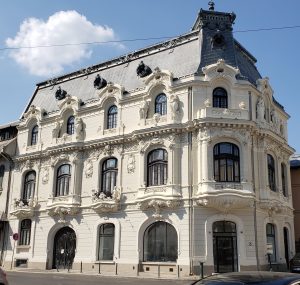
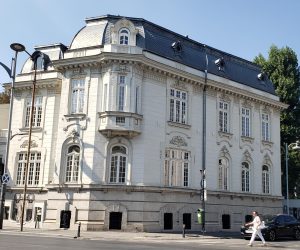

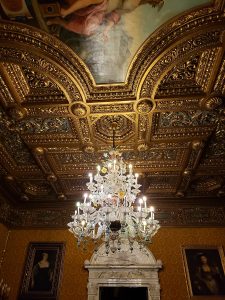
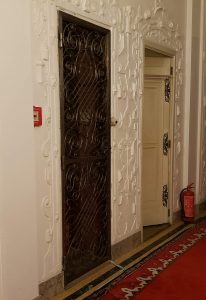

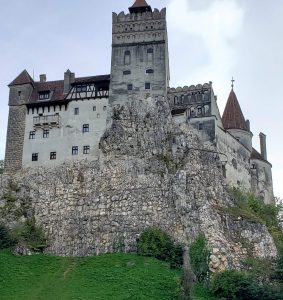
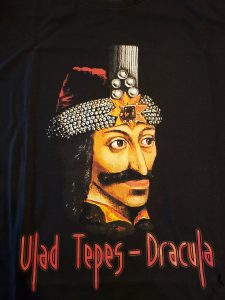
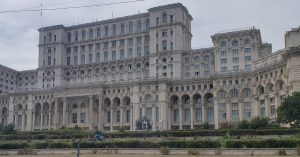
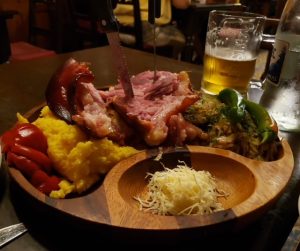
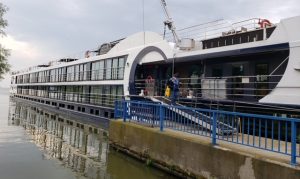




Comments are closed.